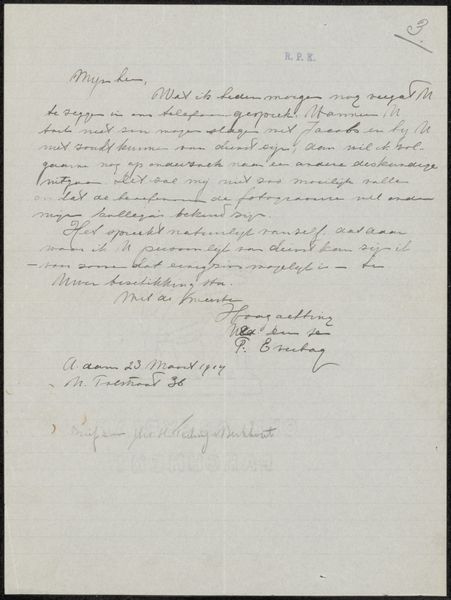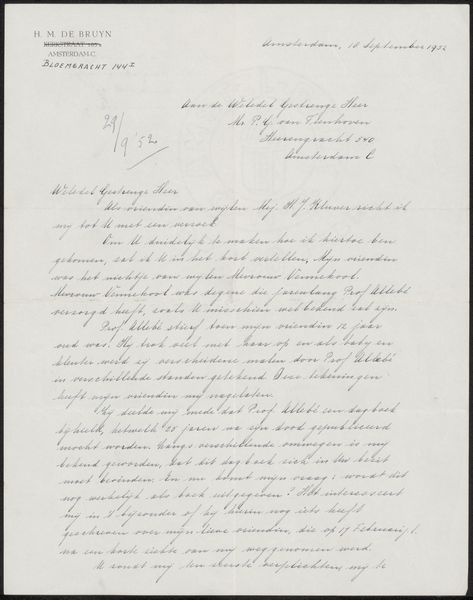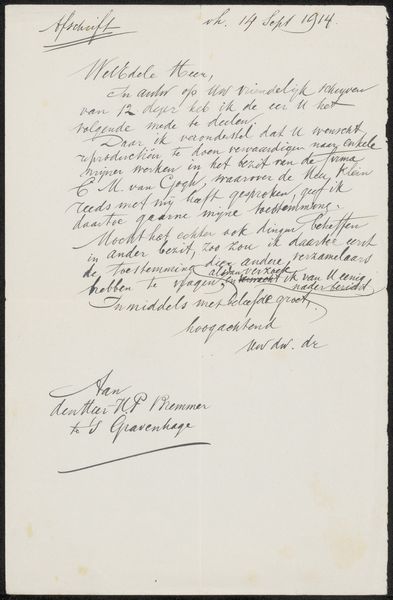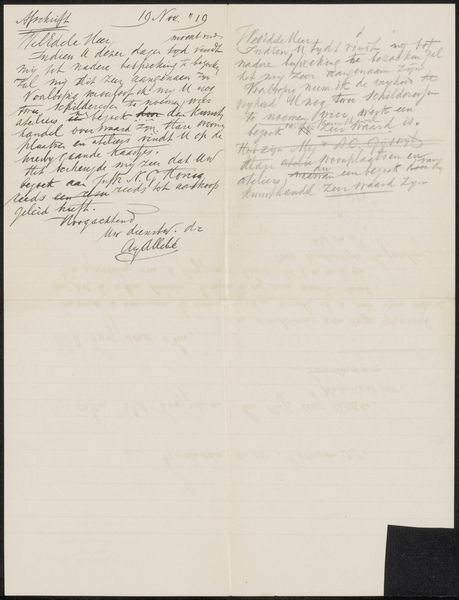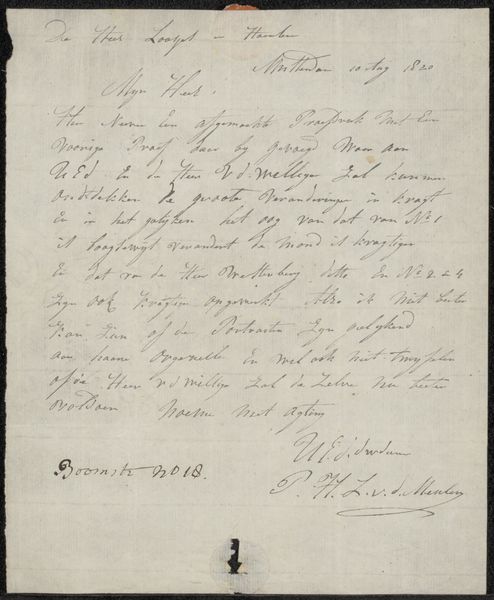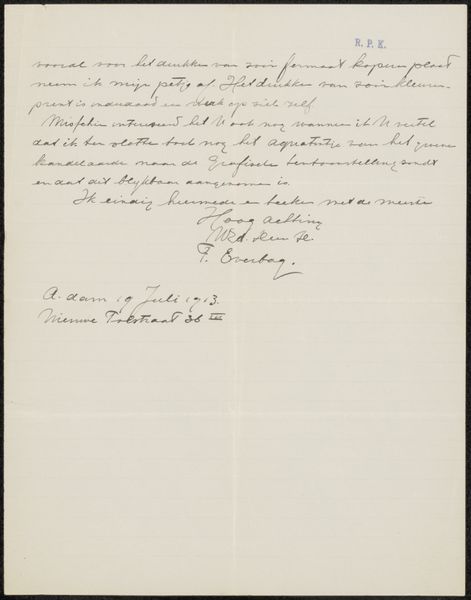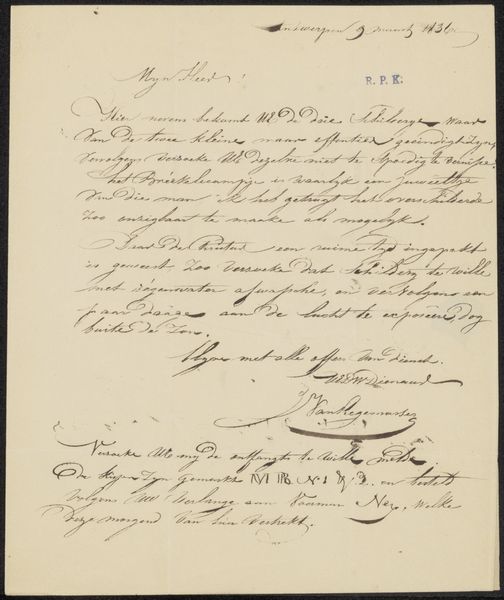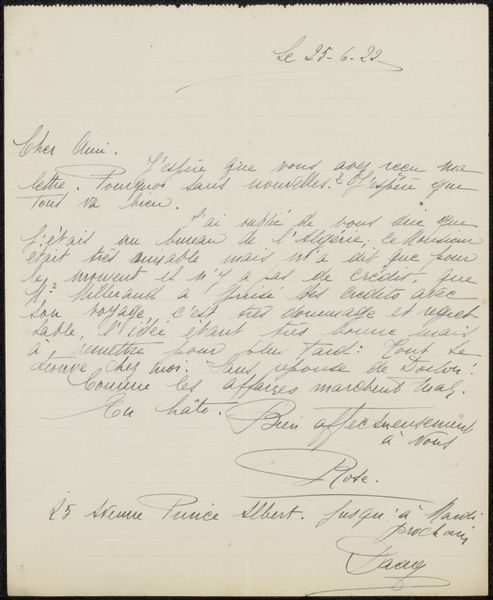
drawing, paper, ink
#
portrait
#
drawing
#
paper
#
ink
Copyright: Rijks Museum: Open Domain
Curator: Looking at this piece, what strikes you immediately? Editor: It's surprisingly intimate. Just handwritten ink on paper, you know? You can almost feel the texture, the way the ink sits on the page. The act of physically writing a letter feels almost radical now. Curator: This is "Brief aan Mien Cambier van Nooten" by Dick Ket. It's held here at the Rijksmuseum and although it is labeled with a date range of 1912 to 1940, we lack precise context for its making. We see here ink on paper. Editor: It's like peering into another time. Who was Mien Cambier van Nooten, and what was their relationship to Ket? This snippet gives us more questions than answers, doesn't it? Curator: Absolutely. Letters, particularly in this era, played a crucial social function, shaping intimate bonds and circulating political and cultural ideas. We only see fragments now. A small swastika symbol sits up in the upper right of the document. So it looks like this was possibly drafted right around World War II. Editor: The choice of paper itself becomes meaningful when viewed within its historical context, the Nazi symbolism… Was this intended to intimidate the recipient or align Dick Ket’s thoughts in that manner. Curator: It prompts one to imagine where Ket produced his drawing: Did he have a comfortable studio? How would Ket gain access to his chosen papers in a resource and regulation strained political climate? What informed the creation of this symbolic composition? Editor: Yes, I am just left reflecting upon how handwritten communications served such integral roles in preserving information. Each tiny shift and variation adds unique and intricate data to examine—quite interesting. Curator: Right! Letters remain precious artifacts from times bygone. Thanks so much for unpacking this work together, Editor.
Comments
No comments
Be the first to comment and join the conversation on the ultimate creative platform.
